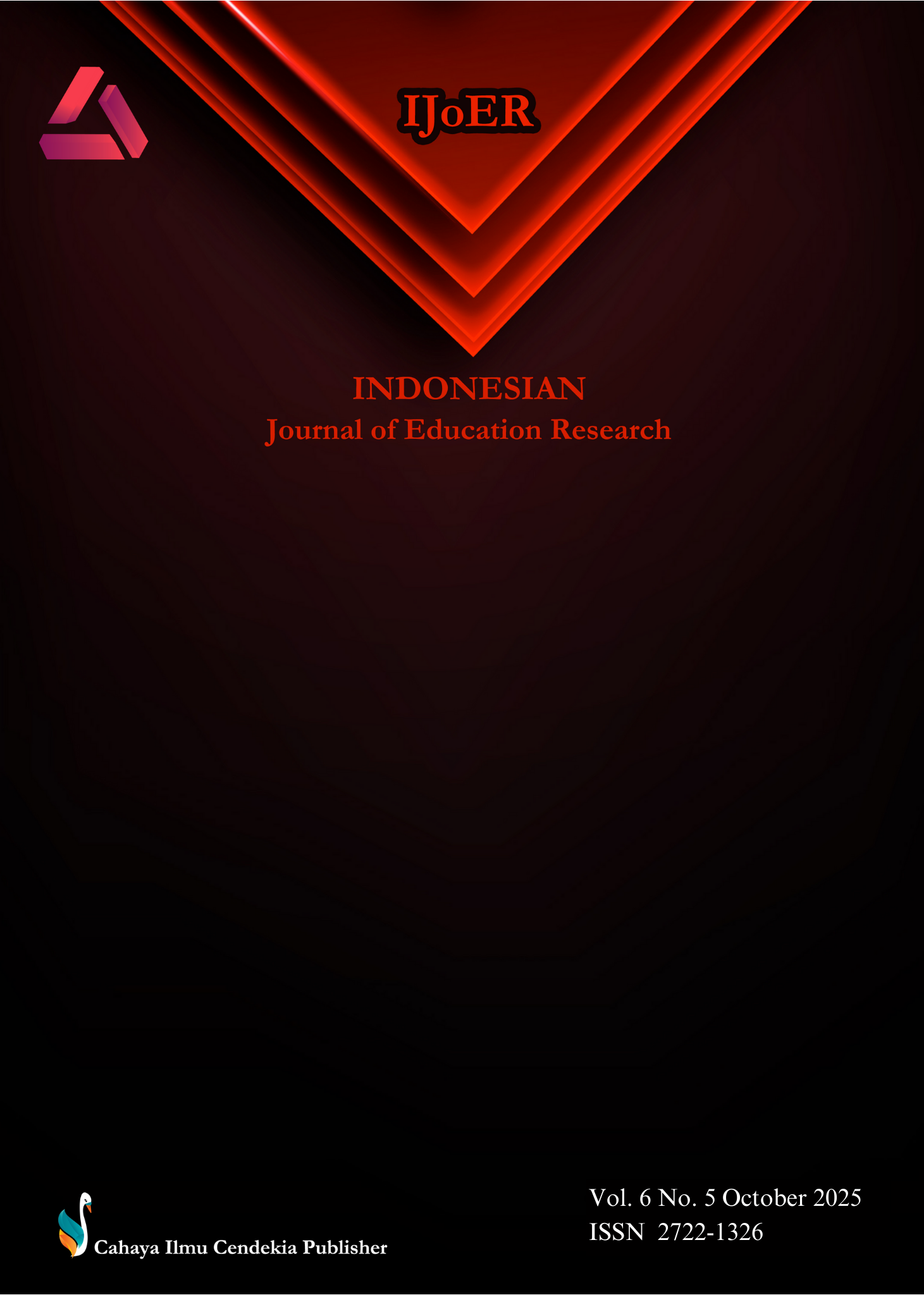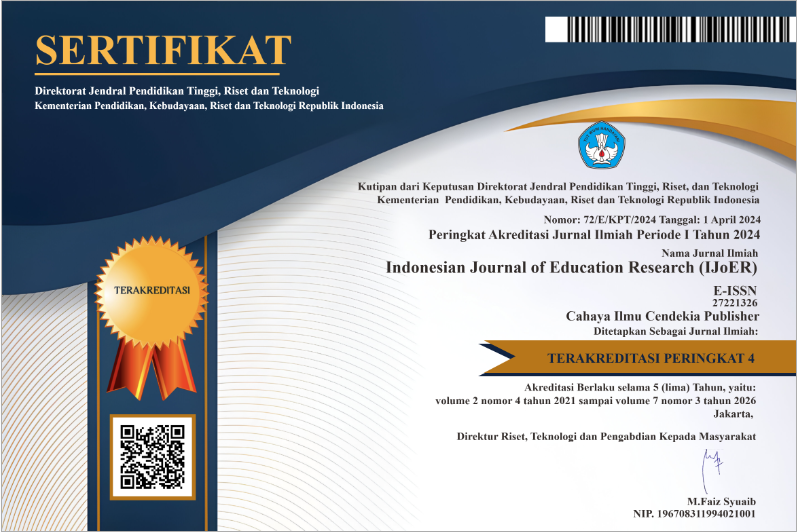The Interplay of Cognition and Emotion in Brain-Based Social Studies Classroom
Abstract
Purpose of the study: This study investigates how students' cognition and emotion are interrelated and interconnected in learning Social Studies through a brain-based learning approach. The results will contribute to the academic discourse on the role of brain science in transforming classroom practices in Social Studies to achieve the desired learning outcomes.
Methodology: A case study methodology was utilized to explore how brain-based Social Studies lessons influence students' cognitive and emotional responses. Data were collected through interviews, focus group discussions, and creative assessment tools such as emoticons, numerical ratings, and metaphors, enabling a comprehensive understanding of students' perceptions, engagement levels, and overall learning experiences within the classroom context.
Main Findings: Social Studies is a value-based discipline that necessitates the development of both cognitive and emotional skills among students. Therefore, the integration of emotion in teaching Social Studies should align with the subject’s learning objectives. It should begin with enjoyment to activate students' brains, followed by surprise to help them see connections, and conclude with optimism, demonstrating how their learning can be applied to real-life situations. This dual focus is essential for fostering civic participation and cultivating active citizenship.
Novelty/Originality of this study: Brain-based learning, as an emerging approach in teaching Social Studies, posits that emotion and cognition are intertwined and inseparable. It provides solid scientific explanations for how the brain learns and achieves the desired learning outcomes of the subject. This approach may offer a long-awaited solution to the longstanding perception of Social Studies as a dull and unengaging subject.
References
National Council for the Social Studies, “National curriculum standards for social studies: A framework for teaching, learning, and assessment.” 2010.
Department of Education, “General Shaping Paper,” 3rd Floor, Bonifacio Building, DepEd Complex, Meralco Avenue, Pasig City 160, 2023.
J. J. Chiodo and J. Byford, “Do They Really Dislike Social Studies? A Study of Middle School and High School Students,” J. Soc. Stud. Res., vol. 28, no. 1, pp. 16–26, Apr. 2004, doi: 10.1177/235227982004028001002.
Y. Zhao and J. D. Hoge, “What Elementary Students and Teachers Say about Social Studies,” Soc. Stud., vol. 96, no. 5, pp. 216–221, Sep. 2005, doi: 10.3200/TSSS.96.5.216-221.
K. Alazzi and J. J. Chiodo, “Perceptions of Social Studies Students About Citizenship: A Study of Jordanian Middle and High School Students,” Educ. Forum, vol. 72, no. 3, pp. 271–280, May 2008, doi: 10.1080/00131720802046123.
I. J. Haas, “Political Neuroscience,” in Neuroimaging Personality, Social Cognition, and Character, Elsevier, 2016, pp. 355–370. doi: 10.1016/B978-0-12-800935-2.00019-1.
E. O. Wilson, Consilience: the unity of knowledge, 1st Vintage books Ed. New York: Vintage Books, 1999.
J. T. Jost, H. H. Nam, D. M. Amodio, and J. J. Van Bavel, “Political Neuroscience: The Beginning of a Beautiful Friendship,” Polit. Psychol., vol. 35, no. S1, pp. 3–42, Feb. 2014, doi: 10.1111/pops.12162.
N. Altermark and L. Nyberg, “Neuro-Problems: Knowing Politics Through the Brain,” Cult. Unbound, vol. 10, no. 1, pp. 31–48, Apr. 2018, doi: 10.3384/cu.2000.1525.181031.
V. Bonomo Ed. D., “Brain-Based Learning Theory,” J. Educ. Hum. Dev., vol. 6, no. 2, 2017, doi: 10.15640/jehd.v6n1a3.
G. Whitman and I. Kelleher, Neuroteach: brain science and the future of education. Lanham: Rowman & Littlefield, 2016.
J. D. Connell, Brain-based strategies to reach every learner. in Teaching resources. New York: Scholastic, 2005.
M. M. Hardiman, Connecting brain research with effective teaching: the Brain-Targeted Teaching Model. Lanham, Md: Scarecrow Press, 2003.
L. Erlauer, The brain-compatible classroom: using what we know about learning to improve teaching. Alexandria, Va: Association for Supervision and Curriculum Development, 2003.
J. E. Zull, The art of changing the brain: enriching teaching by exploring the biology of learning, 1st ed. Sterling, Va: Stylus Pub, 2002.
J. E. LeDoux, “Emotion, Memory and the Brain,” Sci. Am., vol. 270, no. 6, pp. 50–57, Jun. 1994, doi: 10.1038/scientificamerican0694-50.
A. R. Damasio, Descartes’ error: emotion, reason and the human brain, 18. Druck. New York: Quill, 2004.
M. Sheppard, D. Katz, and T. Grosland, “Conceptualizing Emotions in Social Studies Education,” Theory Res. Soc. Educ., vol. 43, no. 2, pp. 147–178, Apr. 2015, doi: 10.1080/00933104.2015.1034391.
K. Shabatat and M. Al-Tarawneh, “The Impact of a Teaching-Learning Program Based on a Brain-Based Learning on the Achievement of the Female Students of 9th Grade in Chemistry,” High. Educ. Stud., vol. 6, no. 2, p. 162, May 2016, doi: 10.5539/hes.v6n2p162.
V. A. G. Torio and M. Z. Cabrillas-Torio, “Whole brain teaching in the Philippines: Teaching strategy for addressing motivation and academic performance,” Int. J. Res. Stud. Educ., vol. 5, no. 3, Oct. 2015, doi: 10.5861/ijrse.2015.1289.
H. Harrison, M. Birks, R. Franklin, and J. Mills, “Case Study Research: Foundations and Methodological Orientations,” Forum Qual. Sozialforschung Forum Qual. Soc. Res., vol. Vol 18, p. No 1 (2017), Jan. 2017, doi: 10.17169/FQS-18.1.2655.
H. V. Coombs, “Case Study Research Defined [White paper],” Sep. 22, 2022, Zenodo. doi: 10.5281/ZENODO.7604301.
S. Crowe, K. Cresswell, A. Robertson, G. Huby, A. Avery, and A. Sheikh, “The case study approach,” BMC Med. Res. Methodol., vol. 11, no. 1, p. 100, Dec. 2011, doi: 10.1186/1471-2288-11-100.
H. B. Basnet, “Focus Group Discussion: A Tool For Qualitative Inquiry,” Res. Res. J. Cult. Soc., vol. 3, no. 3, pp. 81–88, Oct. 2018, doi: 10.3126/researcher.v3i3.21553.
A. M. A.- Mjdawi and S. I. Jabi, “A Pragma-Semiotic Analysis of Emoticons in Social Media,” Educ. Linguist. Res., vol. 6, no. 2, p. 139, Dec. 2020, doi: 10.5296/elr.v6i2.17887.
C. Teddlie and F. Yu, “Withdrawn - Mixed Methods Sampling: A Typology With Examples,” J. Mix. Methods Res., vol. 1, no. 1, pp. NP1–NP1, Jan. 2007, doi: 10.1177/2345678906292430.
M. Hunter, Mastery teaching, 34. print. Thousand Oaks, Calif: Corwin Press, 1994.
D. A. Sousa, How the brain learns: a classroom teacher’s guide, 2nd ed. Thousand Oaks, Calif: Corwin Press, 2001.
E. Jensen, Teaching with the brain in mind, 2nd ed., rev.Updated. Alexandria, Va: Association for Supervision and Curriculum Development, 2005.
V. Braun and V. Clarke, “Using thematic analysis in psychology,” Qual. Res. Psychol., vol. 3, no. 2, pp. 77–101, Jan. 2006, doi: 10.1191/1478088706qp063oa.
R. N. Caine and G. Caine, Making connections: teaching and the human brain. Alexandria, Va: Association for Supervision and Curriculum Development, 1991.
A. Smith, Accelerated learning in practice: brain-based methods for accelerating motivation and achievement, 3. reprint. Stafford: Network Educational Press, 2001.
P. Wolfe, Brain Matters: Translating Research into Classroom Practice, 2nd Edition, 2nd ed. Alexandria: Association for Supervision & Curriculum Development, 2010.
C. A. Zeigler Dendy, Teaching teens with ADD, ADHD & executive function deficits: a quick reference guide for teachers and parents, 2nd ed, rev.Expanded. Bethesda, MD: Woodbine House, 2011.
L. Graham, “Aha! Moments Re-Wire the Brain,” Linda Graham, MFT Resources for Recovering Resilience.
N. Nisbet, “How the Brain Science of Games Helps Students Reach ‘Aha Moments,’” Getting Smart.
L. Bonetti et al., “Temporal pattern recognition in the human brain: a dual simultaneous processing,” Oct. 21, 2021. doi: 10.1101/2021.10.21.465263.
P.-Y. Yin, Ed., Pattern Recognition: Techniques, Technology and Applications. Erscheinungsort nicht ermittelbar: IntechOpen, 2008.
C. Hannaford, Smart moves: why learning is not all in your head. Arlington, Va: Great Ocean Publishers, 1995.
N. Munn, “Meaning Making Brains:_Toward an Existential Neuroscience,” University of Montana - Helena.
M. B. Ratzer and P. Jaeger, Think tank library: brain-based learning plans for new standards, grades 6-12. Santa Barbara, Calif: Libraries Unlimited, 2015. doi: 10.5040/9798216025511.
M. A. Scaddan, 40 Engaging Brain-Based Tools for the Classroom. New York: Skyhorse Publishing Company, Incorporated, 2016.
Copyright (c) 2025 John Albert R Dela Rosa

This work is licensed under a Creative Commons Attribution 4.0 International License.
Authors who publish with this journal agree to the following terms:
- Authors retain copyright and acknowledge that the Indonesian Journal of Education Research (IJoER) is the first publisher licensed under a Creative Commons Attribution 4.0 International License.
- Authors are able to enter into separate, additional contractual arrangements for the non-exclusive distribution of the journal's published version of the work (e.g., post it to an institutional repository or publish it in a book), with an acknowledgment of its initial publication in this journal.
- Authors are permitted and encouraged to post their work online (e.g., in institutional repositories or on their website) prior to and during the submission process, as it can lead to productive exchanges and earlier and greater citation of published work.







.png)
.png)




















